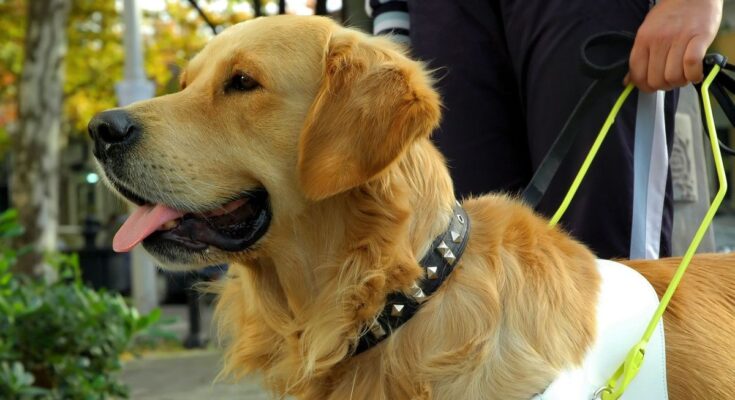Nearly 1.7 million French people suffer from a vision problem, according to figures from the Federation of the Blind of Europe. Some of them share their daily lives with a guide dog to have more autonomy. Each year, April 24 is dedicated to these little companions with their impressive abilities.
Guide dogs only acquire this status after rigorous training, during which they learn, among other things, to obey, avoid obstacles, cross pedestrian crossings or use public transport. But not just any dog can be a guide dog.
Dogs that become one are selected and monitored from birth. The preferred breeds are the Labrador, the Golden Retriever, but also the German Shepherd, the Saint-Pierre and the Royal Poodle. Their average size and strength explain why they are particularly suited to the role of guide dog, as do their sociable character, as well as their capacities for concentration, memory, autonomy and adaptation.
The puppies, future guide dogs for the blind, are placed at the age of two months in a voluntary foster family which instills in them the basics of good education (cleanliness, basic obedience, good behavior within the family and outside, etc.). Once they are twelve months old, they join a school to follow a more specific educational path. This is when the dogs learn to move around with a harness or to find pedestrian crossings for their future master.
25,000 euros for dressage
At the end of their training, the dogs pass the Certificate of Aptitude for Guiding (CAG). If they are successful, they are then given free of charge to blind or visually impaired people who request them from associations affiliated with the French Federation of Guide Dog Associations for the Blind (FFAC). Each year, 220 guide dogs are entrusted to people with a visual disability, according to the FFAC. Although they do not have to pay to be entrusted with a guide dog, the training of these animals has a fairly significant cost. Raising, educating and caring for a guide dog until retirement costs 25,000 euros. Funding is done through donations and bequests.
A guide dog accompanies its master, on average, for eight to ten years depending on its state of health and its abilities. After that he retired. Several options are then possible: either the dog remains with its owner or in his or her close entourage, or it is welcomed into a volunteer family. It is important to keep in mind that these animals are working. This is why you should not disturb them, feed them or pet them when you come across them in the street, on public transport or in shops.
Guide dogs are authorized to access any public place, in accordance with the accessibility law of February 11, 2005 and the provisions of the Public Health Code. However, it happens that people accompanied by guide dogs are refused entry to certain establishments. The Observatory on the Accessibility of guide and assistance dogs has recorded 167 cases of refusal in 2023, particularly in restaurants, public transport and even places of care. And this is certainly just the tip of the iceberg.
As a reminder, refusing entry to a guide dog or charging for it constitutes discrimination. Violators face a fine ranging from 150 to 450 euros.




